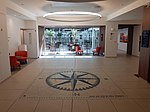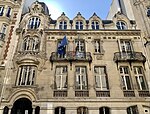Saint-Pierre-du-Gros-Caillou
1822 establishments in France19th-century Roman Catholic church buildings in FranceChurches completed in 1822Roman Catholic churches in the 7th arrondissement of Paris

Saint-Pierre-du-Gros-Caillou is a Roman Catholic parish church located at 52 Rue Dominique in the 7th arrondissement of Paris, completed in 1733. It takes its name from a large boulder, or Caillou, which marked the limit between the parishes of the abbeys of Saint-Saint-Germaine des Pres and Sainte-Geneviece.
Excerpt from the Wikipedia article Saint-Pierre-du-Gros-Caillou (License: CC BY-SA 3.0, Authors, Images).Saint-Pierre-du-Gros-Caillou
Rue Pierre Villey, Paris 7th Arrondissement (Paris)
Geographical coordinates (GPS) Address Phone number Website External links Nearby Places Show on map
Geographical coordinates (GPS)
| Latitude | Longitude |
|---|---|
| N 48.8597 ° | E 2.3052 ° |
Address
Église Saint-Pierre du Gros Caillou
Rue Pierre Villey
75007 Paris, 7th Arrondissement (Paris)
Ile-de-France, France
Open on Google Maps










